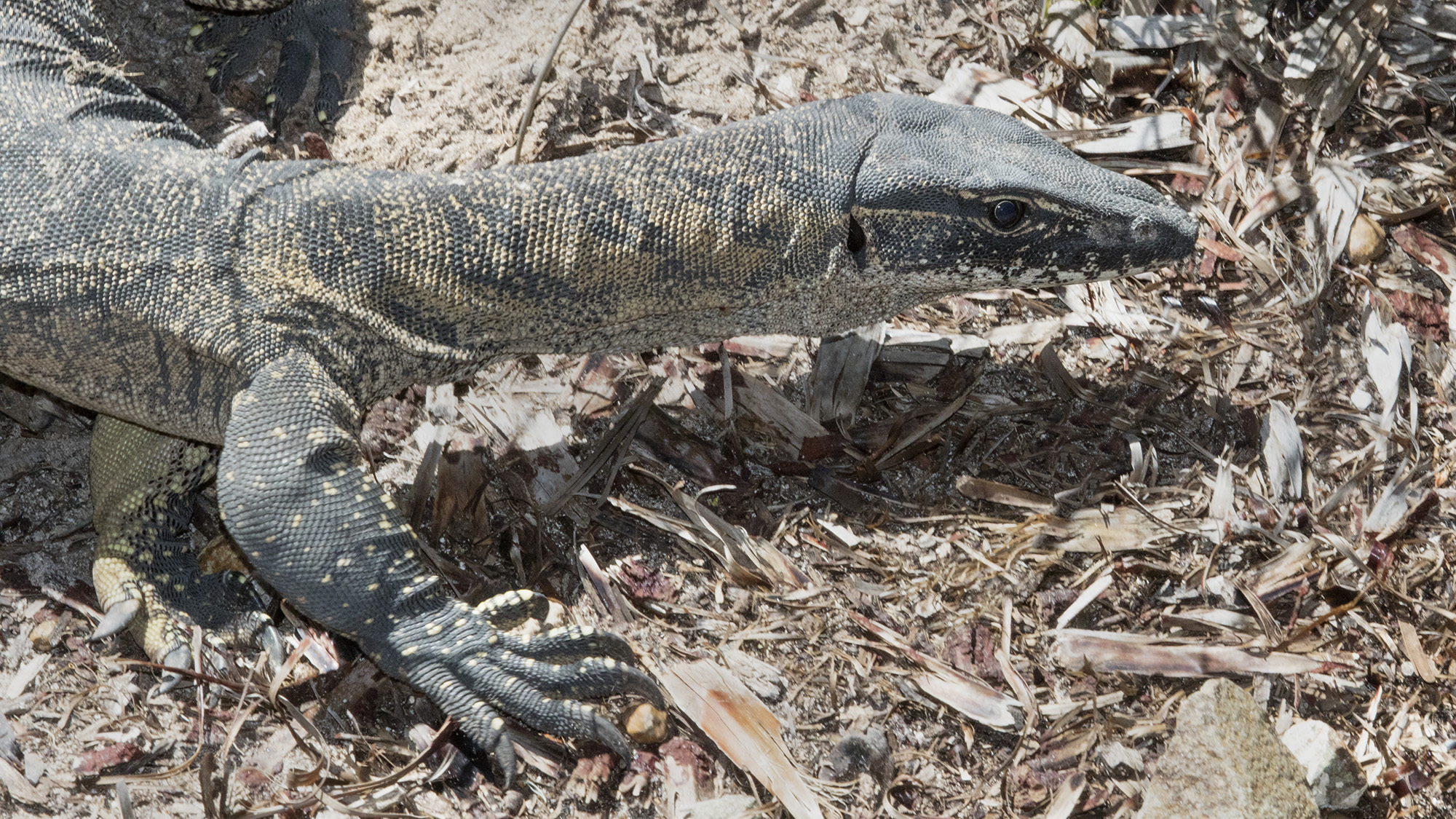

Sheep farmers in Australia could save millions of dollars a year with the help of some giant lizards. The dinosaur-like heath goanna (Varanus rosenbergoi) serves as a natural clean-up crew when they scavenge and clean up maggot-ridden animal carcasses from the landscape. Fewer carcasses like this reduces the emergence of blowflies, which hurt sheep by laying eggs on their backsides that eventually hatch into flesh-eating maggots. The findings are described in a study published June 25 in the journal Ecology and Evolution.
[Related: New fluffy longhorn beetle discovered in Australia.]
Meet the heath goanna
Heath goannas are an endangered species of giant lizard. They are native to the heathlands–or shrublands–of southern Australia. They can reach almost five feet in length. They primarily survive on the carcasses of other animals, but will also catch live animals.
Reptiles like the heath goanna are the biggest remaining native land scavengers in much of Australia today and play a vital role in the ecosystem by eating insects.
What is fly strike?
When blowflies lay eggs, the flesh eating maggots burrow into the sheep’s flesh and start to eat it alive. The disease called fly strike causes painful wounds that not only affects the sheep’s market value and reduces breeding success, but it can kill them. It also costs the Australian sheep farming industry roughly $280 million a year.
“Blowflies are a massive problem for the Australian sheep farming industry,” said Jameson. “They cause a horrible disease that is expensive for farmers to manage and a real animal welfare problem for sheep.”
Native species get the job done
In the study, Jameson and his team looked at 18 sites across the Marna Banggara Rewilding Project area on Australia’s southern Yorke Peninsula. Heath goannas perform superior blowfly control than introduced European mammal species such as red foxes and cats.
Marna Banggara is supported by Narungga traditional owners and is an ambitious rewilding project that aims to restore ecosystem health in the region by reintroducing missing native Australian species. During the 18th century, European settlers to Australia brought red foxes with them for hunting and cats as pets. Since then, many scavengers and other wildlife native to Australia have had their populations decimated. Over 90 percent of the native mammals in this region are now extinct.

They compared the scavenging activity of different animals in parts of southern Australia. He left hundreds of dead rats at feeding stations, with camera traps. After five days, he returned to see whether the rats had been eaten, and to count the number of blowfly maggots present on any remaining carcasses. The footage revealed which scavenging animal found the rat and how quickly.
“It was disgusting–we were counting maggots. After five days we’d find over 1,000 maggots in one rat if a scavenger hadn’t found it. Those maggots produce blowflies that can spread up to 20 kilometers [12 miles] in a week, putting local sheep flocks at risk of fly strike,” said Jameson.
They found that native Australian scavengers ate more of the dead rats, and with the rodents more of the flesh-eating maggots, than the scavengers introduced from Europe.
“The results suggest that conservation work in southern Australia to remove invasive species should also focus on boosting the population of heath goannas and other native species because they’re really important for the wider ecosystem,” said Jameson. “As well as benefiting native wildlife this will have knock-on benefits for [the] local agricultural industry, and also attract more wildlife tourism.”
